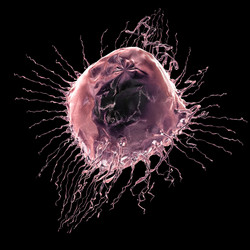New devices advance breast cancer diagnosis
The incidence rate of breast cancer in Europe is about 430 000 cases every year. Tumours with increased levels of the ‘Human epidermal growth factor receptor 2’ (HER2) are aggressive and associated with high mortality. HER2 is a potent oncoprotein that has become an established target for adjuvant treatment of breast cancer. Despite the efficacy of anti-HER2 monoclonal antibodies, tumours still progress due to innate or acquired resistance to the treatment. There is an immediate need to develop new, innovative, targeted agents for HER2-positive disease and to identify HER2-related biomarkers for disease prediction, diagnosis and monitoring. In a bid to address this, the EU-funded IMAGINT (HER Imaging and molecular interaction mapping in breast cancer) project brought together an interdisciplinary team of researchers from across Europe. The scientific plan focused on the therapeutic potential of the antibody-like proteins — ‘Designed ankyrin repeat proteins’ (DARPins). These are small molecules based on human protein scaffolds that can bind specific targets with high affinity. IMAGINT developed a series of tools for synthesising and manipulating DARPins to carry specific chemical modifications and generated DARPins against different HER receptors. They went on to study the subcellular HER2 distribution and proposed this as a novel method for screening patient tissues. Researchers discovered differences between breast cancer and corresponding healthy tissue using imaging cycler microscopy. Furthermore, they detected alterations in associating miRNAs/proteins in response to anti-HER2 therapy. They also identified a number of breast cancer prognostic biomarkers following bioinformatic analysis of gene expression. One of the IMAGINT imaging assays for identification of HER heterodimers demonstrated clinical applicability and prognostic value. Using this assay, scientists validated a new mechanism of resistance to ‘anti-epidermal growth factor receptor’ (anti-EGFR) therapy in patients with triple-negative breast cancer. Furthermore, they developed a new agent that enables non-invasive whole body imaging of HER2+ tumours, in doing so providing information on disease spread and stages. The biomarkers identified would help in making tailored treatment decisions and assist in developing new drugs. For instance, early identification of patients at a high risk of metastatic recurrence can help clinicians change their treatment strategy. Collectively, the deliverables of the IMAGINT study enable stratification and monitoring of breast cancer for hopefully better patient outcomes.
Keywords
Breast cancer, diagnosis, biomarkers, HER2, DARPins, imaging cycler microscopy







